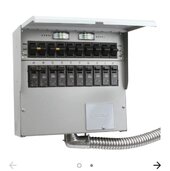sun_of_a...
New Member
RE : paralleling Litime 12V 230Ah Plus LiFePO4s
Hi and thank you.
I’m planning on making several SEPARATE 12v battery banks, and I’m trying to decide whether 4 of these batteries in parallel is my max bank size, or 6 of these is, and specifically whether the extra amps/current of 6 parallel in a 12v bank might make the built-in BMSs in each battery less effective at doing it's job balancing the battery's cells? Than is, less effective than a 4 battery 12v bank of these?
I have 16 Litime 12V 230Ah Plus Low-Temp Protection LiFePO4s. Each has a Built-In 200A BMS. No bluetooth wifi.
6 of these to a bank would be great b/c I think that’s the max recommended for a 12v Victron MultiPlus-II (based on it’s maximum charging current).
edit: I hesitate to provide a average load estimate, but let's say 2000 watts 8 hrs all night. But I would manually switch between banks for now as necessary, but that's a different question I'll have for later, i think.
Thank you forum!
Hi and thank you.
I’m planning on making several SEPARATE 12v battery banks, and I’m trying to decide whether 4 of these batteries in parallel is my max bank size, or 6 of these is, and specifically whether the extra amps/current of 6 parallel in a 12v bank might make the built-in BMSs in each battery less effective at doing it's job balancing the battery's cells? Than is, less effective than a 4 battery 12v bank of these?
I have 16 Litime 12V 230Ah Plus Low-Temp Protection LiFePO4s. Each has a Built-In 200A BMS. No bluetooth wifi.
6 of these to a bank would be great b/c I think that’s the max recommended for a 12v Victron MultiPlus-II (based on it’s maximum charging current).
edit: I hesitate to provide a average load estimate, but let's say 2000 watts 8 hrs all night. But I would manually switch between banks for now as necessary, but that's a different question I'll have for later, i think.
Thank you forum!
Last edited:




